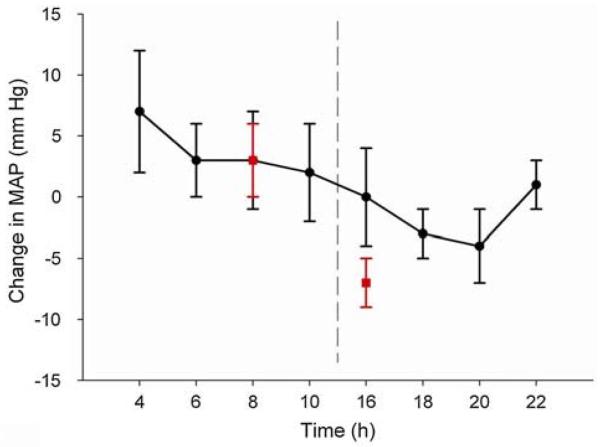Fig. 4.
Diurnal variation in the post-exercise response of MAP measured during two different experimental protocols. Data shown by the circle symbols were collected during a study (n = 6 participants) in which the amount of sleep prior to the 04:00 and 16:00 test times was controlled at approximately 4 h. Post-exercise hypotension was significantly greater following exercise in the afternoon and evening compared with the early morning, even though the amount of prior sleep was controlled between times of day (Jones et al. 2008b). The square symbols indicate data from another study (n = 12 participants) in which exercise was undertaken at two times of day. Pre-exercise posture and diet were controlled but the amount of prior sleep was not (Jones et al. 2008a). Post-exercise hypotension was, again, more marked in the afternoon. Taken together, these data suggest that the ‘normal’ blood pressure lowering effects of exercise are blunted in the morning compared with the afternoon and early evening and this is not necessarily explained by differences in prior sleep between these times of day

